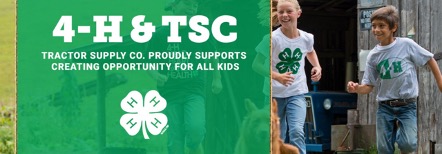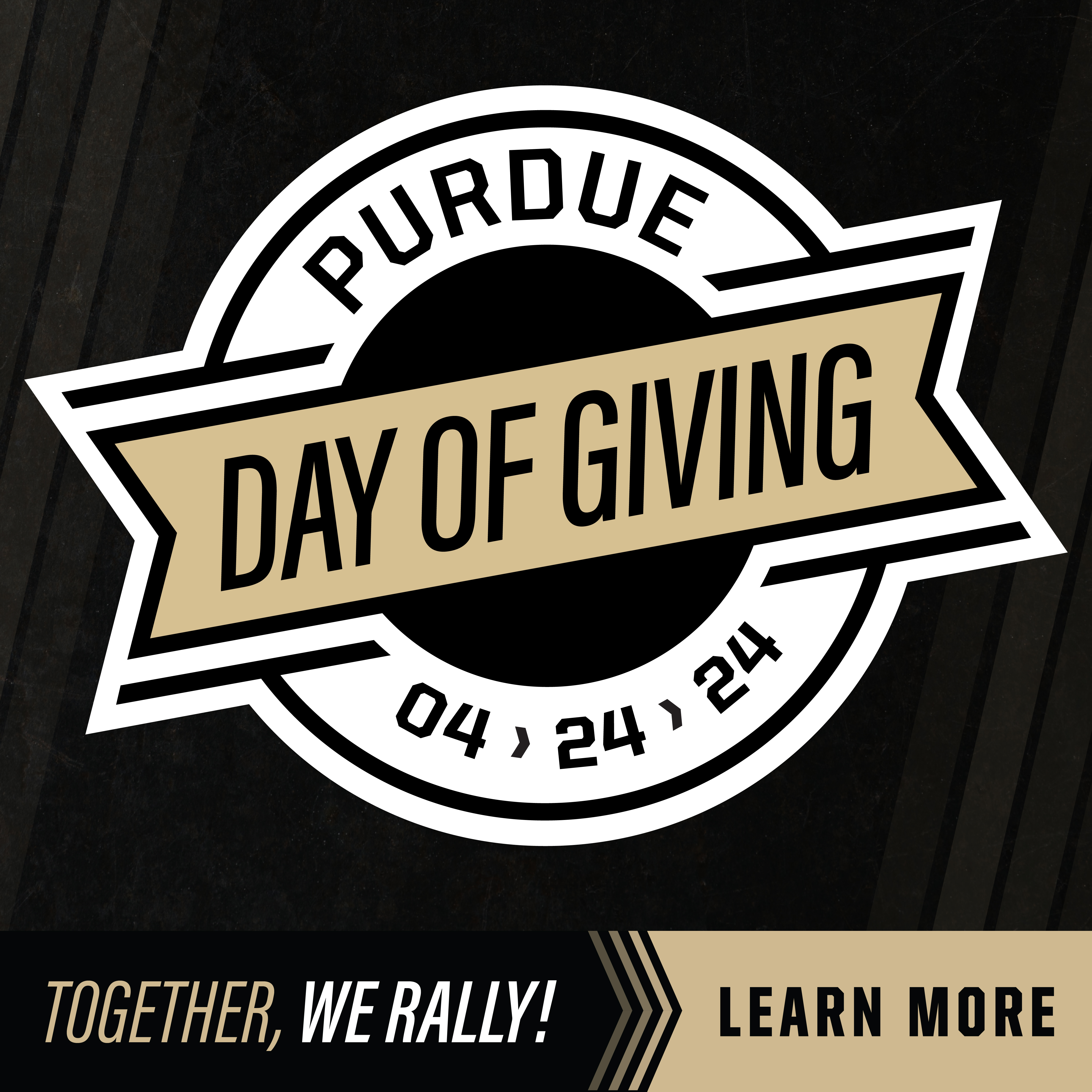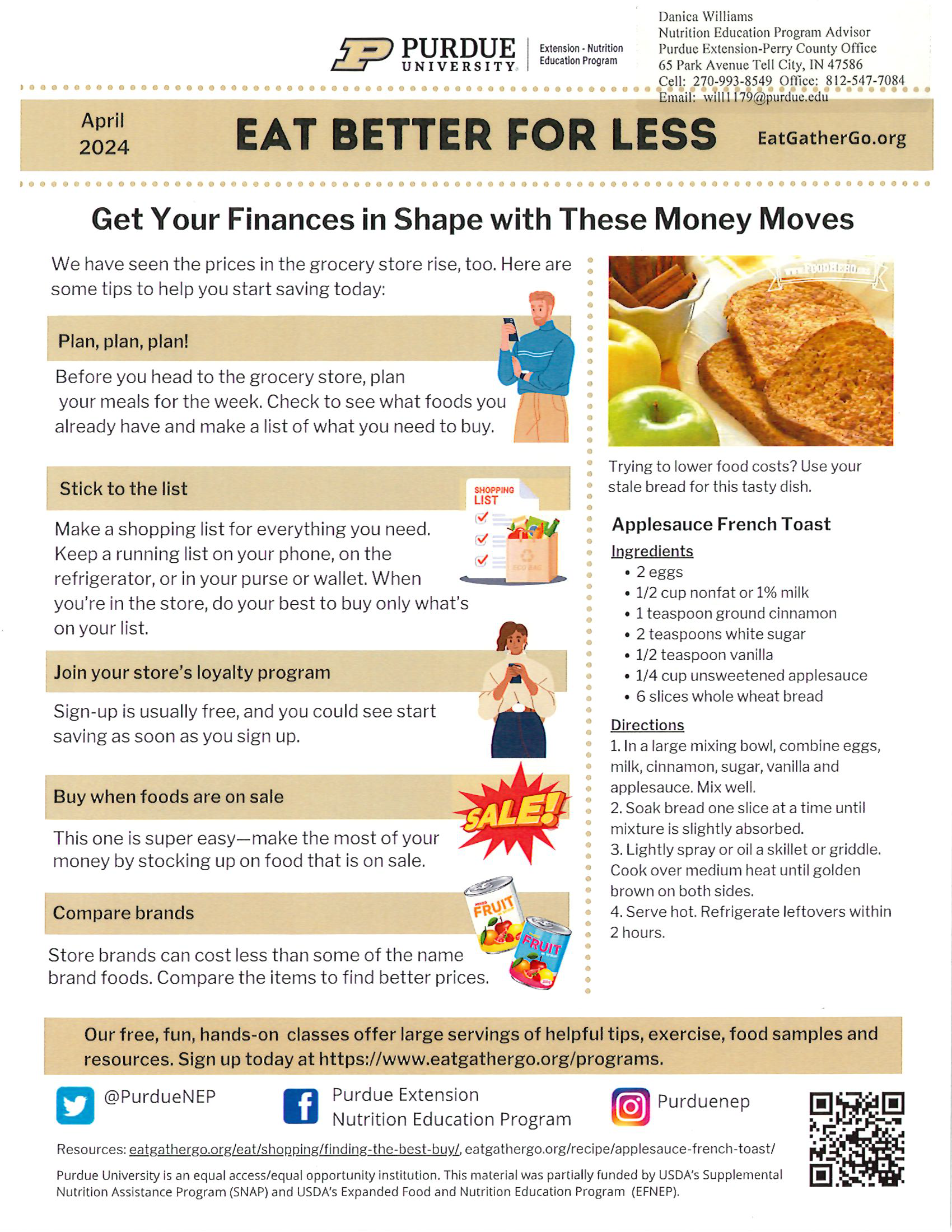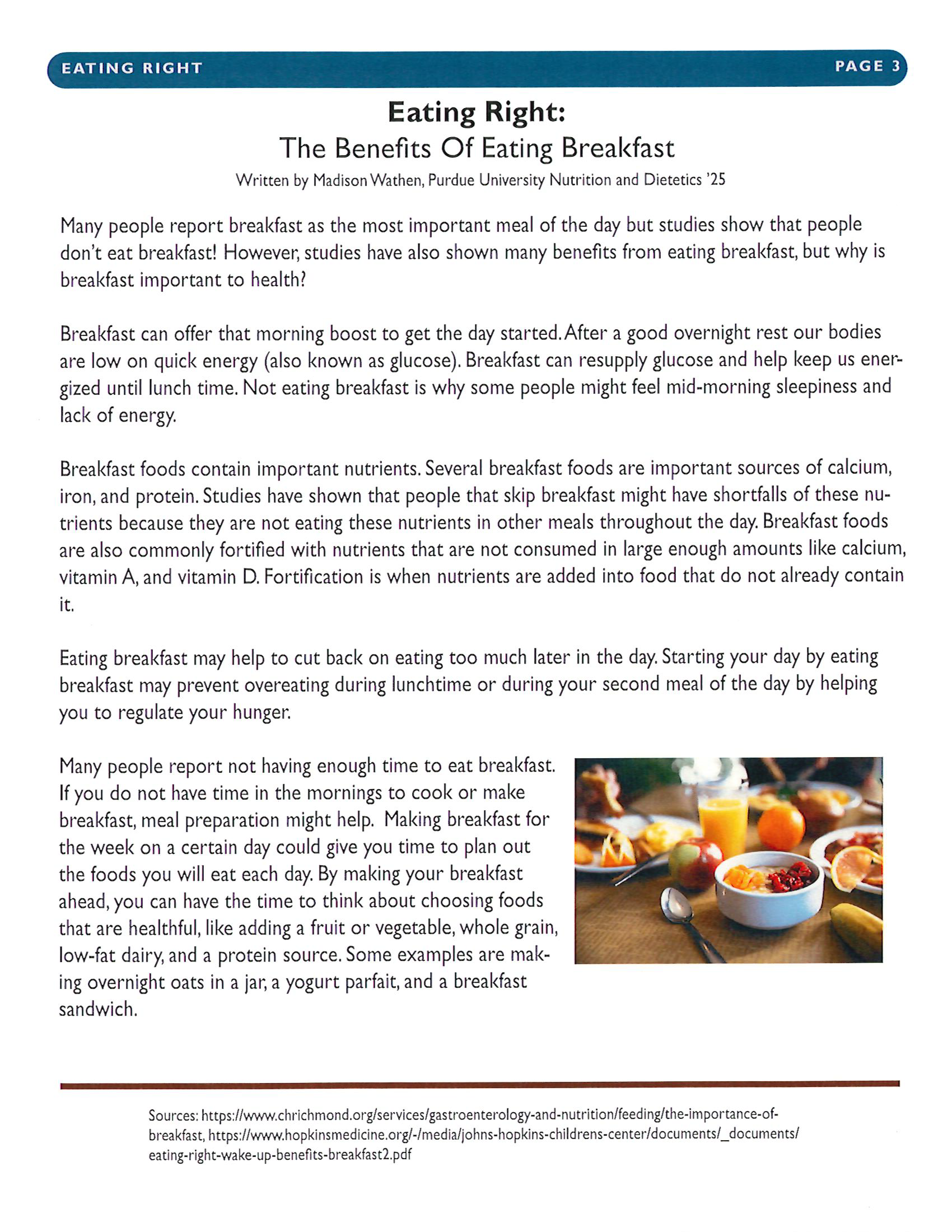Perry County May/June Extension Newsletter
4-H Newsletter

Hannah Lasher, 4-H Educator
Important Dates
- April 27th- Cattle Tagging Date
- May 15th-May 16th Science Sensation County 7th Graders
- May 15th-4-H animal ID deadline
- May 19th- Outdoor Adventures Spark Club-Vastwood Lake
- May 31st-June 2nd- 4-H Camp
- June 12th- June 14th- Academy @ Purdue’s Campus
- June 19th- FairEntry Deadline
- June22nd-June 24th- Band @Purdue’s Campus
- June 24th- June 26th- 4-H roundup @ Purdue’s Campus
- July 8th - Project check-in from 5pm-7:30pm
- July 11th- Livestock check-in 4pm-8pm
- 7/12/24-7/15/24- Fair Dates
- New this year-Opening Ceremony has been moved to 8 AM on Friday July 12th!
- July 15th- Project check-out 4-8pm
- August 2-August 18th- Indiana State Fair
- August 3rd- Outdoor Adventures-O’Bannon Woods
Hit me with your best shot
*Attention all youth that are interested in photography*
Minnesota 4-H Photography is excited to offer another multi-state photography contest open to youth in grades K-13!
Select your best photo (with no or minimal editing) and submit it with up to two sentences that explains why it’s special to you! More information and rules for the challenge can be found at: 4-H Hit Me with Your Best Shot Photo Contest | UMN Extension with rules available here.
Submit one (1) jpg or jpeg image and statement to fourhphoto@umn.edu by 11:59 p.m. (CST) on May 1, 2024. Volunteer 4-H photography judges will provide feedback via a slideshow. Top photos will be recognized with a prize and random prize drawing winners will also receive a gift.
Register at: https://z.umn.edu/2024BestShot4HPhotoContest
Questions? Email fourhphoto@umn.edu
4-H Camp Information
 Get registered for 4-H Camp in 4Honline now! The Perry County 4-H Council has generously offered to sponsor up to 75% of the cost of the camp! Be sure to enter the coupon codes (2) in order to get this discounted rate. Camp is open to grades third through eighth grade. If you have any questions, call the extension office at 812-547-7084. Camp will take place at Country Lake Retreat Center with so many fun activities planned! You will not want to miss camp. May 31st-June 2nd are the dates, be sure to register today! The coupon codes are as followed 50% Code-HTXGJH 25% Code-TUZVSC
Get registered for 4-H Camp in 4Honline now! The Perry County 4-H Council has generously offered to sponsor up to 75% of the cost of the camp! Be sure to enter the coupon codes (2) in order to get this discounted rate. Camp is open to grades third through eighth grade. If you have any questions, call the extension office at 812-547-7084. Camp will take place at Country Lake Retreat Center with so many fun activities planned! You will not want to miss camp. May 31st-June 2nd are the dates, be sure to register today! The coupon codes are as followed 50% Code-HTXGJH 25% Code-TUZVSC
Volunteer Appreciation
The end of April, April 21st-April 27th to be exact is volunteer appreciation week. Please be sure to like and share the post on our facebook page recognizing our wonderful volunteers that have put in over 20 years with our program! While we are extremely grateful for their tenure, we would like to recognize every single volunteer.
4-Her’s and parents, be sure to thank the volunteers that help out with day to day 4-H tasks. Whether it is helping out at the fair, helping or leading 4-H club meetings, attending 4-H Council meetings, Fairgrounds meetings, Livestock Committee meetings, helping with fundraisers or tagging days; please say thank you! Perry County has some of the best volunteers helping out with our 4-H programming. We are so grateful for their willingness to serve by giving their time, energy and talents to this community. In today’s busy world, it is easy to forget about the people making sure things happen. Volunteers do not necessarily have the time; they just have the heart.
TSC Clover Drive
Be sure to sign up your club to work the Tractor Supply Clover Drive. Mark your calendars for this event! Spring Paper Clover: 4/24/24 — 5/5/24. Tractor Supply proudly began our partnership with 4-H in 2010 and we have since helped raise over $14 million through our Paper Clover fundraisers. The success of these campaigns has impacted over 69,000 students by providing them with hands-on learning experiences through projects in STEM, agriculture, healthy living, and civic engagement.
100% of funds raised through our two Paper Clover fundraisers directly benefit 4-H and the kids and teens they work with - 90% of donations directly support 4-H youth in the state it was raised, and the remaining 10% supports national 4-H programming.

Important Fair Info
Fair will take place July 12th-July 15th. Project check in will be July 8th 5pm-7:30. Animal Check in will be July 11th 4pm-8pm. The Opening Ceremony has been changed this year to start at 8AM. This year's Perry County Fair is going to be a fun one! Every day of the fair will be having a Fun day at 2pm. Make sure you participate because you could be paid in fairbucks! Be looking for ways to earn “Fairbucks” leading up to fair in order to spend them at the concessions stand.
Perry County Fair Bucks-Keep an eye out for a chance to win 2024 Fair Bucks. Fair Bucks are just like cash, but can be used at any club stand/concessions at the 2024 Perry County Fair! There will be ways to win Fair Bucks on our Social Media platforms leading up to Fair and again during the Fair! At the end of Fair, clubs receiving Fair Bucks as payment can submit those to the 4-H Council for reimbursement.
Animal ID and Drop Add Deadline
Make sure to get your animal Id’s entered in 4Honline before May 15th. This date is very important and if you do not get ID’s and animals entered you will not be allowed to show at the state fair. The handbook has all the rules and regulations and you will refer to that or call the office if you have any questions. May 15th is also the deadline to drop or add projects in 4Honline. The 4-Her or parent cannot add through your profile. To add or drop a project please email Rhonda or Hannah at rhauenstein@purdue.edu or hlasher@purdue.edu or you can contact the office at 812-547-7084.

Perry County Ag News

Sara Dzimianski, ANR Educator
Educator's Corner
Spring has sprung and we are already seeing summertime temperatures. With the warmer temperatures we will see rapid growth of lawns and pasture grasses. We’re already seeing a proliferation of cool season annual weeds including henbit and purple deadnettle, as well as marestail.
Be careful to limit livestock access to lush green pastures due to risk of grass tetany and bloat. As pretty as the new growth looks, it will not provide adequate energy due to a high protein, high water, and low carbohydrate content. Ensure that you are providing adequate supplementation to your livestock, particularly growing or lactating livestock.
Farmers and gardeners should use caution working the soil early in the season. Recent rains have saturated soils, and working soils that are too wet leads to compaction issues that can cause longer term problems.
Cool season veggies should already be in the ground and growing. Don’t let the warm weather fool you into planting warm season veggies too early. Wait until we are consistently seeing warm temperatures at night before planting or transplanting tomatoes, squash, peppers, and other heat-loving plants outdoors. Be sure to harden your transplants by exposing them to the outside for a few days before transplanting.
Sara
Prescribed Grazing With Goats Business Opportunities Webinar Offered May 3
Extension Educator Sara Dzimianski will present a webinar in collaboration with the Indiana Small Business Development Center on creating a prescribed grazing with goats business.
Sara will introduce what is “Prescribed Grazing”, how it can benefit land owners and managers, and business opportunities surrounding it, as well as what is involved in running a prescribed grazing business.
Declining Pines of the White Variety
Source: Purdue Landscape Report, April 5, 2024 - Included in Issue: 24-02
By: John Bonkowski
I think white pines are beautiful trees, especially at maturity, and they have the added advantage that they are one of the few conifers that don’t try to kill you with their needles. Besides working with the foliage, have you ever had to “rescue” a child who climbed too high in a spike-infested deathtrap of an evergreen? Did you develop the rashes to prove it? Not with a white pine!
My kids haven’t had the chance to climb a mature white pine. Many seem to decline at about 15-20ft. We have been describing this issue as white pine decline, but it isn’t entirely easy to explain. There are a number of factors that influence overall plant health and that can contribute to plant decline, but let’s focus on white pines here. White pine decline is typically attributed to root stress that can be caused by or exacerbated by high soil pH (chemically unavailable nutrients), heavy soil texture (clays), compaction, and excessive soil moisture. Keep reading.
Field Crop Disease Monitoring Resources for Indiana
Source Pest & Crop News, APRIL 12, 2024, ISSUE: 2024.3
By Darcy Telenko
There are a number of resources available for monitoring field crop diseases here in Indiana. The Purdue Field Crop Pathology Team will be tracking diseases across Indiana and will post updates here in Pest & Crop and on our website https://indianafieldcroppathology.com/. You can also follow me on Twitter @DTelenko
National disease tracking and prediction programs are place to monitor for some the more economically important diseases in the Unites States, such as Fusarium head blight in wheat, wheat stripe rust, southern rust of corn, and tar spot. Read more.
Health & Human Sciences
Bringing University information to the local level to strengthen families, spend smart, eat right, and live well.

Contact Megan Jasperson, Health and Human Sciences Educator
mjaspers@purdue.edu
Perry County Office
65 Park Ave
Tell City, IN 47586
812-547-7084
Spencer County Office
1101 E. County Rd 800 N
Chrisney, IN 47611
Bite by Bite: Nutrition for Life Podcast
 Anywhere you look you can find a magic pill or formula promising to protect your health and transform your body in three easy steps. And, many of these claims do have (or at least started with) a speck of valid science. So, how do you cut through all the hype and separate truth from false marketing claims? The truth is, it doesn’t have to be that complicated! Join us as we explore and dissect different fads and trends to discover the real science behind food and nutrition. Find us on Apple and Google podcasts, Radio Public and Spotify. Follow us on Facebook and Instagram @BiteByBiteNutritionForLife
Anywhere you look you can find a magic pill or formula promising to protect your health and transform your body in three easy steps. And, many of these claims do have (or at least started with) a speck of valid science. So, how do you cut through all the hype and separate truth from false marketing claims? The truth is, it doesn’t have to be that complicated! Join us as we explore and dissect different fads and trends to discover the real science behind food and nutrition. Find us on Apple and Google podcasts, Radio Public and Spotify. Follow us on Facebook and Instagram @BiteByBiteNutritionForLife
Upcoming Area ServSafe Manager and Food Handler Courses
ServSafe Manager Certification is an approved training in the state of Indiana to become a certified food protection manager. ServSafe Food Handler is for anyone else who needs basic food safety and food handling training, including home-based vendors, food service workers, volunteers, or others who work with food who only need the basic training. This course is NOT intended for food service managers. Here are upcoming classes scheduled in our area. For more information including registration links visit www.purdue.edu/servsafe/workshops or https://extension.purdue.edu/county/knox/ServSafe.html ServSafe Manager Classes June 7, 2024, Vincennes, IN - register at: https://cvent.me/1mYOml October 22, 2024, Washington, IN contact Jennifer 812-254-8668 February 19, 2025, Dubois County contact Chelsea 812-482-1782
Save the Date: PURDUE DAY OF GIVING!
Good enough has never been in Purdue’s vocabulary. We are a university that believes in giant leaps and endless possibilities. We work every day to empower those around us and move the world forward. Together, we rally with the relentless hope of being part of something bigger than ourselves. This Purdue Day of Giving, join us as we celebrate Purdue’s reputation of excellence at scale. To Boilermakers everywhere, we say—once more, we rally! This year, donations can be made directly to Purdue Extension- Perry County to benefit programs right here. If you are interested in helping further the reach of our excellent programs, keep April 24th on your radar. 100% of these funds come directly back to the county to support education programming efforts. For more information go to www.dayofgiving.purdue.edu/

Heads Up: Blender Bike Fun Coming to Perry County
Ever wanted to exercise and blend your own smoothie at the same time? Now you can! A new “toy” has recently been purchased in our area by Purdue Extension- a Rock the Bike Fender Blender Pro. This stationary bike can be used to make anything you would put in a typical blender. While you ride, the energy is used to propel the blender. We plan on using this to teach about the importance of physical activity and nutrition to youth and adults alike! Be on the look out for this awesome new addition at events and health fairs across the county!
Perry County Health Department Takes Advantage of Health First Indiana Funds
Did you know that our local health department has received Health First Indiana funds to improve public health in our community? Please take a moment to review the list of services that are currently being provided and reach out to the Health Department at 812-547-2746 with questions.


"MAKING THE HEALTHY CHOICE, THE EASY CHOICE.”
ERIN MEYER, RDN - COMMUNITY WELLNESS COORDINATOR
Do I Qualify for SNAP?
To qualify for the Supplemental Nutrition Assistance Program, applicants must meet certain non-financial and financial requirements. Non-financial requirements include state residency, citizenship/alien status, work registration and cooperation with the IMPACT (job training) program. Financial criteria include income and asset limits.
The asset/resource limits are $5,000 for most households. Assets include bank accounts, cash, real estate, personal property, vehicles, etc. The household's home and surrounding lot, household goods and personal belongings and life insurance policies are not counted as assets in the SNAP program.
All households (except those with elderly or disabled members) must pass a gross income test (130% of poverty) to qualify for SNAP benefits. The gross income is per household size and based on the gross monthly income received by all household members.
For more information, please visit: https://www.in.gov/fssa/dfr/snap-food-assistance/do-i-qualify-for-snap/
May is Mental Health Awareness Month
We encourage you to join us in fostering open dialogues, cultivating empathy and understanding. We also urge you to share our resources to support individuals and families on their journey towards mental wellness.
For more information visit: https://www.nami.org/Get-Involved/Awareness-Events/Mental-Health-Awareness-Month
What is a Sustainable Food System?
The effects of climate change impact the health of both people and the environment. To minimize the impact and feed a growing population, which is estimated to reach 9.7 billion by 2050, food systems are incorporating more sustainable practices including reducing food waste and conserving resources.
Sustainable food systems
A “food system” is a broad term that describes anything involved in the production, distribution and consumption of food. This includes growing, raising, harvesting, processing, distributing, ensuring food safety, eating and even discarding of food. It also includes the connection of these processes and the people and resources that contribute to and are impacted by the food system.
The sustainability of a food system impacts everyone. Food systems shape what foods are available for people to eat, how easy they are to get and how much they cost.
A “sustainable food system” provides nutrition and food security for everyone without compromising the well-being of people or the planet now and in the future.
While the topic of sustainability grows and the definition evolves, most experts agree that sustainable food systems address three key factors: economic, environmental and social.
The key factors of a sustainable food system impact us in different ways. The economic, or financial, goal of a sustainable food system is to benefit everyone involved in the system. This includes providing livable wages for food system employees, tax profits for governments, profits for the businesses involved in the food system and safe, nutritious, affordable and available food for all.
The social aspect of a sustainable food system involves fairness and equity for all participants, including vulnerable and underrepresented groups. This means promoting good health among workers, respecting cultural traditions, providing a safe work environment and animal well-being.
The environmental goal of a sustainable food system is to achieve a neutral or positive effect on the natural environment. This includes retaining biodiversity (which refers to the variety of species in our food supply and environment), limiting water use, prioritizing the health of animals and plants, minimizing food loss and waste and cutting down the amount of carbon in the atmosphere that contributes to climate change.
Balancing all factors
When developing sustainable food systems, economic, social and environmental impacts must be considered — as well as potential unintended outcomes. For example, improvements in technology may increase profits for investors (an economic benefit) and efficiencies in production but may result in job loss for farm workers. Alternatively, implementing new animal well-being practices at a farm would have social and environmental benefits but may require additional costs or labor, which impacts the economic aspect of the food system.
How you can help
Developing sustainable food systems requires action from all people involved. While individual efforts like recycling and reducing food waste are important, fundamental changes to the way food is produced, distributed and eaten, as well as changes to policies and infrastructure, also are needed to make lasting change.
Here are two ways you can help:
Education. Learn about recycling programs and other opportunities to conserve resources in your community. If applicable, advocate for sustainability at your workplace by sharing your knowledge with others and proposing impactful changes such as placing recycling and composting bins in cafeterias and break areas.
Action. Taking steps to reduce food waste, such as meal planning before grocery shopping, embracing leftovers and composting are great ways to do your part in your own kitchen. Consider supporting and purchasing from food brands that incorporate sustainable practices into their production and distribution. Most companies have this information available on their website.
Together, individual actions in addition to large-scale changes at the local, state, federal and global levels can create a sustainable food system.
10 Food Safety Tips for the Slow Cooker
Slow cookers are a convenient way to whip up a delicious dish with minimal effort. Just throw all of the ingredients in the pot, turn it on, head to work, come home and dinner is ready to be served. But that's not all you can do with a slow cooker. It is perfect for making overnight oatmeal, a dip or even a stew. This is a dream come true for any multitasker, but if you neglect food safety rules, that dream could quickly turn into a nightmare.
Follow these 10 tips to ensure any dish you slow cook is safe to eat:
- Start with a clean space. Make sure the cooker, utensils and work area are clean. And don't forget to wash your hands before preparing any food.
- Keep perishable foods refrigerated as long as possible. Bacteria multiply rapidly when at room temperature. To avoid this, keep your food refrigerated until it's time to add it to the pot.
- Prepare meat and vegetables separately. If you prep your meat and vegetables beforehand, store them separately in your fridge in order to avoid cross-contamination.
- Always defrost meat or poultry before putting it in the slow cooker. Defrosting will ensure your food cooks all the way through to its safe internal temperature. Defrost frozen foods in the refrigerator, in the microwave or submerged in cold water — never at room temperature.
- Pay attention to temperature. It is important to make sure your slow cooker reaches a bacteria-killing temperature. If you’re able, try starting your slow cooker on the highest setting for the first hour and then switch it to low for longer cooking. However, it is still safe to cook foods on low the entire time — for example, if you are leaving for work. Just make sure your food reaches the proper internal temperature (see tip 9 below).
- Make sure foods fit. The slow cooker should be half to two-thirds full to ensure your food cooks thoroughly. Don't overstuff it!
- Cut up meats. Large chunks of meat may take too long to cook all the way through. Cut meat into smaller pieces before adding it to a slow cooker.
- Keep the lid on. It is important to retain heat when making a slow-cooker meal, so avoid taking off the lid. Only remove the lid to stir or check for doneness.
- Use a food thermometer. The only way to know for sure that your food is safe to eat is with a food thermometer. Use a food thermometer to ensure the food has reached the proper internal temperature.
- Store leftovers in shallow containers and refrigerate within two hours. One of the best parts of your slow-cooked meal is the leftovers. But make sure you are storing them safely and eating them in a timely manner to reduce your risk of food poisoning. Store leftovers in shallow containers and refrigerate within two hours of removing from the pot.
This tip sheet is provided by: Erin Meyer
Nutrition Education Program Newsletter
Danica Williams
Nutrition Education Program Advisor
Purdue Extension-Perry County Office
65 Park Avenue Tell City, IN 47586
Cell: 270-993-8549 Office: 812-547-7084
Email: will1179@purdue.edu


